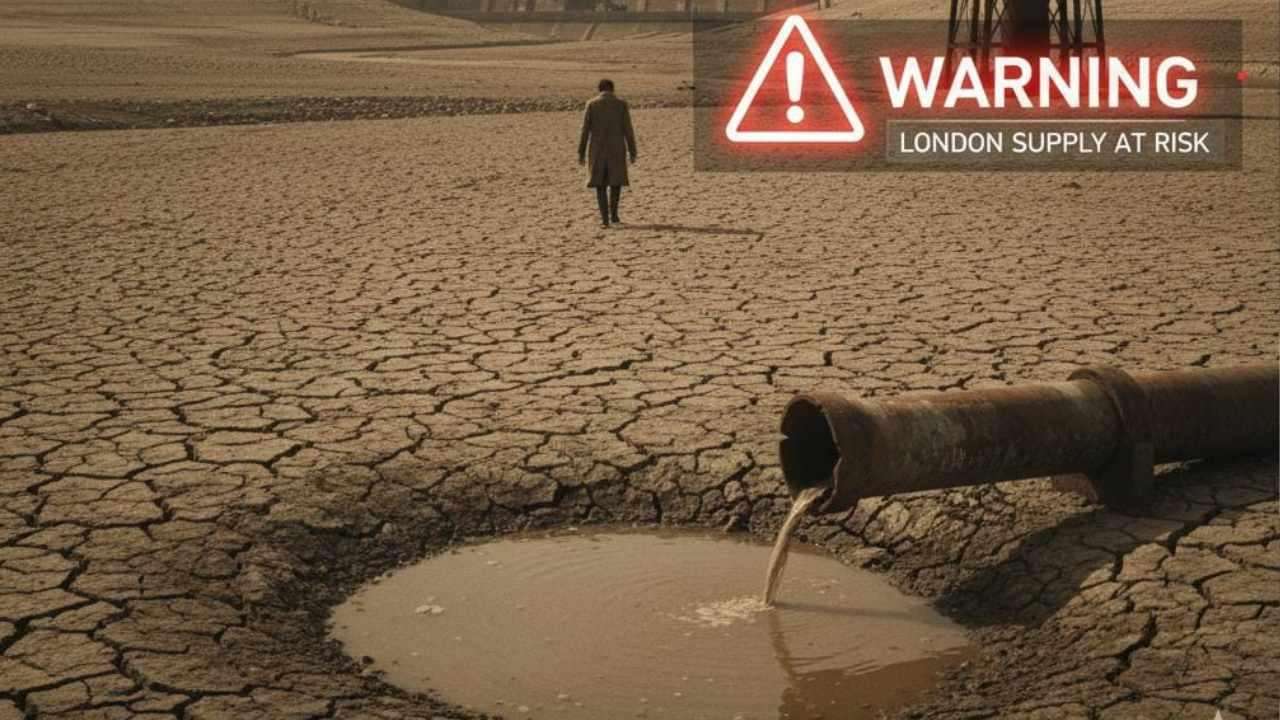The United Kingdom is facing a deepening water crisis after the first seven months of 2025 were confirmed as the driest since 1976. Experts are sounding the alarm, warning that without "fast changes," the country risks running out of drinking water as it sleepwalks into a future defined by hotter summers and systemic scarcity.
The Triple Threat to Water Security
The immediate crisis is driven by a convergence of three critical factors:
Unprecedented Drought: The prolonged lack of rainfall has depleted the nation's stores. By October 2025, total reservoir stocks across England had fallen to an alarming 62.1% on average, a figure that continues to drop weekly. Regions like Yorkshire and the Pennines are under the most severe pressure, with some reservoir groups seeing stocks as low as 54.9% and 59.9% respectively. The Environment Agency has declared five areas of England, including Yorkshire, the East Midlands, and the West Midlands, to be officially in drought. The impact is visible, with sites like Rutland Reservoir holding far less water than usual.
Crippling Infrastructure Failure: This extreme weather exposure is compounded by a leaking system. An estimated 2,690 megalitres of treated water are lost every day through aging pipes across England—a volume equivalent to over a thousand Olympic-sized swimming pools. Despite a \textsterling104 billion private investment package announced by the government to fix leaks and build new infrastructure, the water companies’ collective progress on reducing leaks has fallen short of targets.
Long-Term Shortfall: Looking ahead, population growth and climate change mean that by 2050, England is projected to face a daily shortfall of five billion litres of water. This long-term structural deficit is forcing the government and industry to make urgent, large-scale interventions.
London's Vulnerability and Regional Hotspots
While the national average is concerning, the most significant strain is seen in the North and South East. South East Water has multiple supply areas, particularly in Sussex, in drought status, with key reservoirs like Ardingly dropping to below 30% total capacity, necessitating ongoing Temporary Use Bans (hosepipe bans). Yorkshire Water has also implemented restrictions and reported a commendable 10% reduction in household water use from customers following the ban.
For London, the risk remains high. While the capital has so far avoided the most severe restrictions, its high population density and reliance on the Thames and local aquifers make it vulnerable. Thames Water has warned that a severe drought could cost the London economy \textsterling330 million per day, and the Environment Agency projects the capital could run out of water within 25 years without new solutions, which include a proposed water recycling scheme and a new reservoir in Oxfordshire.
The Solution: A Decade-Long Construction Race
The primary solution is a massive, multi-decade construction and conservation effort. The government is fast-tracking plans for nine new reservoirs by 2050, with two in the East of England (Cambridgeshire and Lincolnshire) slated for completion between 2036 and 2040.
In the meantime, the focus is on conservation and efficiency. Water companies are aiming for a 50% reduction in leakage by 2050, and the Environment Act 2021 mandates a 20% reduction in domestic water use by 2038. The corporate sector is also feeling the pinch, with companies like Cambridge Water already restricting access to new water supplies for industrial purposes in water-stressed regions until the 2030s.
Is Tap Water Safe? Public Trust Wavers
While the Drinking Water Inspectorate maintains that UK tap water is among the safest in the world, with 99.97% compliance with standards, a series of isolated incidents have undermined public confidence. Recent months have seen customers in areas of London and Yorkshire issued with 'boil water' warnings following the discovery of bacteria like E. coli or coliforms in the supply. Furthermore, an investigation this year revealed that raw drinking water sources, particularly in the South East and East of England, are polluted with toxic 'forever chemicals' (PFAS).
Although there are no national statistics to quantify how many people have stopped drinking tap water, more than 20% of the public has reported worry about contamination. With pollution incidents rising—including a 60% surge in serious pollution incidents reported by the Environment Agency for 2024—the safety of the water environment is now an escalating public health concern, even as the risk of the taps running dry demands equal attention.








.svg)


_2.jpg)
